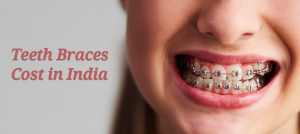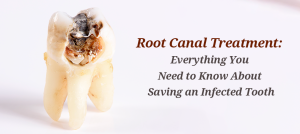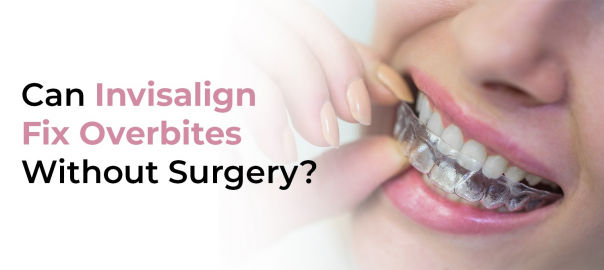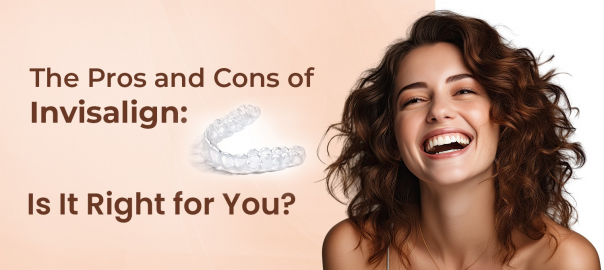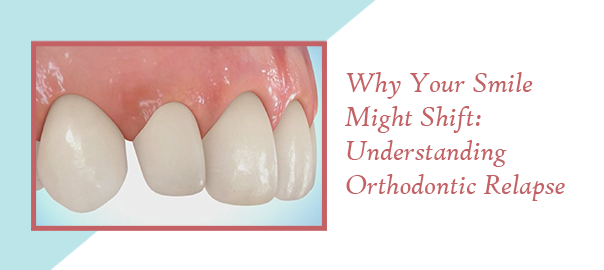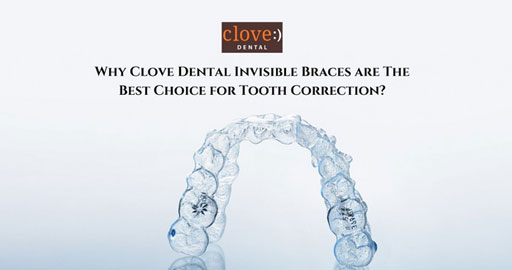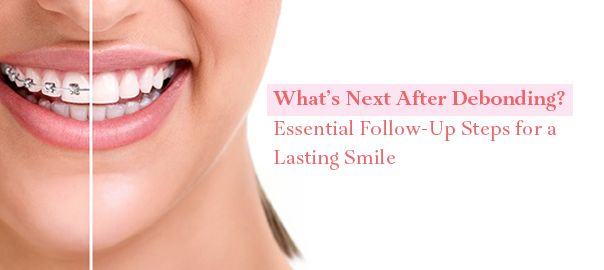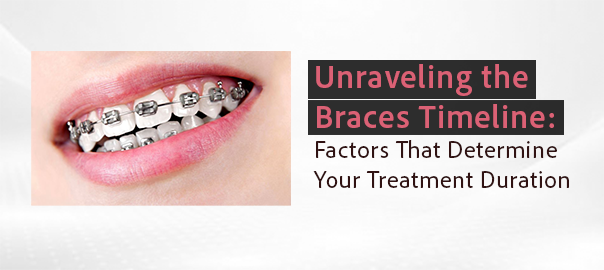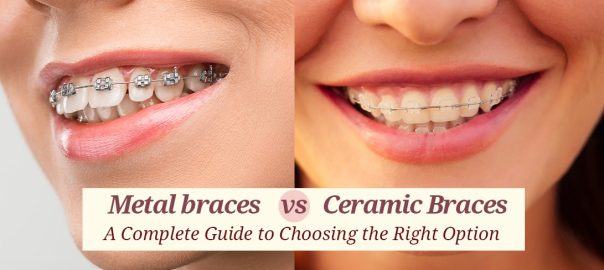
Metal Braces vs. Ceramic Braces: A Complete Guide to Choosing the Right Option
Choosing the right braces can be a tough decision. Should you go for the classic metallic option or opt for the discreet ceramic alternative?
Let’s break down the pros, cons, and key differences to help you make an informed choice and achieve the smile you’ve always wanted.
Understanding Braces: Metallic vs. Ceramic
Braces are orthodontic devices designed to align teeth and correct bite issues. Here’s a quick overview of the two popular types:
Metallic Braces:
Traditional braces made of stainless steel, known for their durability and effectiveness in treating a wide range of orthodontic cases.
Ceramic Braces:
Tooth-colored or clear braces that offer a more discreet treatment option, blending with your natural teeth.
Metallic braces have been the cornerstone of orthodontics for decades due to their reliability. Meanwhile, ceramic braces cater to individuals who seek a subtler solution without compromising on functionality.
Key Differences Between Metallic and Ceramic Braces
| Feature | Metallic Braces | Ceramic Braces |
|---|---|---|
| Material | Stainless steel | Ceramic or composite materials |
| Appearance | Highly visible | Tooth-colored or clear, less visible |
| Durability | Extremely strong and long-lasting | Less durable, prone to chipping |
| Cost | More affordable | Typically more expensive |
| Staining | No staining | Can stain without proper care |
| Treatment Time | Equally effective in most cases | Similar effectiveness, depends on care |
Pros and Cons of Metallic Braces
Pros:
- Highly Durable: Built to withstand significant pressure, making them suitable for complex cases.
- Affordable: Typically, a budget-friendly option compared to ceramic braces.
- Effective: Proven to work efficiently for all types of orthodontic issues.
- Customizable: Patients, especially children and teens, can choose colorful bands to add a fun element to their treatment.
Cons:
- Visibility: Their silver color makes them highly noticeable.
- Discomfort: May cause initial irritation to cheeks and lips.
- Maintenance: While easy to clean, metallic braces can accumulate food particles, requiring diligent oral hygiene.
Pros and Cons of Ceramic Braces
Pros:
- Aesthetic Appeal: Blends with natural teeth, offering a discreet treatment option.
- Comfort: Smooth edges make them more comfortable for many patients.
- Confidence Booster: Their subtle appearance helps patients feel less self-conscious during treatment.
Cons:
- Cost: More expensive than metallic braces.
- Durability Issues: Prone to chipping and breakage, requiring careful handling.
- Staining Potential: Requires excellent oral hygiene to avoid discoloration.
- Limited Color Options: Ceramic braces lack the colorful customization options available with metal braces.
Who Should Choose Metallic Braces?
Metallic braces are ideal for:
- Younger Patients: Kids and teenagers often prefer their durability and the option for colorful bands.
- Budget-Conscious Individuals: Those looking for an affordable treatment option.
- Complex Cases: Perfect for addressing severe orthodontic issues that require robust hardware.
- Fast Treatment: Due to their strength, metallic braces may sometimes expedite the alignment process.
Who Should Choose Ceramic Braces?
Ceramic braces are best suited for:
- Adults and Teens: Individuals who prioritize aesthetics and prefer a less noticeable option.
- Mild to Moderate Cases: Ideal for less complex orthodontic needs.
- Professionals: Those who want discreet treatment while maintaining a professional appearance.
- Special Events: Perfect for individuals concerned about appearance during significant life events, such as weddings or public speaking engagements.
It is best recommended to discuss your requirements and situation with an experienced orthodontist to gain a much better understanding of what is better and more appropriate for your particular case.
Cost Comparison: Metallic vs. Ceramic Braces
At Clove Dental, we offer transparent pricings as well as easy pay out options to make dental braces treatments affordable and accessible to everyone out there.
The braces price at Clove Dental are as follows:
| Type of Braces | Price Range at Clove |
|---|---|
| Metallic Braces Cost | Starting price ₹ 31,400, ranges up to ₹ 73,300 |
| Ceramic Braces Cost | Typically cost between ₹ 56,300 and ₹ 103,300 |
Factors influencing cost include case complexity, treatment duration, and additional procedures. While ceramic braces are more expensive, the added aesthetic benefit often justifies the cost for patients who value discretion.
Why Choose Clove Dental: Excellence in Orthodontic Care
When selecting your orthodontic partner, Clove Dental stands apart through our commitment to exceptional care:
1. Specialized Expertise
Our orthodontic team brings advanced training and extensive experience to your treatment. They undergo regular training and learning sessions to be updated with recent advancements.
2. Innovation in Practice
Our state-of-the-art facilities feature precision imaging systems and advanced orthodontic tools. This enables more accurate treatment planning and comfortable care delivery.
3. Individualized Treatment Journey
We understand that every treatment need is unique. Your treatment plan is specific to your dental needs, lifestyle requirements, and aesthetic goals.
4. Accessible Care Solutions
Understanding that financial considerations matter, we offer:
- Flexible payment structures
- Multiple financing options
- Insurance coordination support
- Transparent cost discussions
5. Complete Care Commitment
Your journey with Clove Dental encompasses:
- Detailed initial consultation
- Regular progress monitoring
- Responsive adjustment visits
- Comprehensive aftercare support
Essential Care Guidelines for Braces Success
Maximize your orthodontic treatment results with these proven maintenance strategies:
Daily Cleaning Protocol
- Utilize soft-bristled brushes designed for orthodontic care
- Apply fluoride toothpaste with gentle circular motions
- Clean thoroughly around brackets and along wires
- Pay special attention to gum line areas
Interdental Care
- Master the use of orthodontic floss threaders
- Incorporate specialized interdental brushes
- Clean between brackets after meals
- Maintain consistent daily flossing routine
Dietary Considerations
Choose braces-friendly food options
Avoid potentially damaging items:
- Hard candies and nuts
- Sticky caramels
- Unpopped popcorn kernels
- Chewy toffees
Professional Monitoring
- Maintain scheduled adjustment appointments
- Report any concerns promptly
- Follow recommended check-up frequency
- Document any unusual sensations
Comfort Management
- Keep orthodontic wax readily available
- Apply as needed for bracket irritation
- Follow provided relief protocols
- Contact our team for persistent discomfort
FAQs
- How do metal and ceramic braces compare?
Traditional metal structures offer superior resilience and value, though many prefer ceramic alternatives for their subtle appearance in social settings. - What should I know about ceramic limitations?
The material requires additional attention, as it may discolor over time and can be more susceptible to structural issues during daily wear. - Does material choice affect treatment duration?
Both approaches achieve similar timeline outcomes, though ceramic options necessitate extra protective measures to maintain their integrity. - Which orthodontic approach stands out as optimal?
Success depends entirely on individual circumstances – considering lifestyle requirements, financial parameters, and personal appearance preferences. - What strategies help preserve ceramic appearance?
Implement thorough cleaning protocols, minimize exposure to pigment-rich substances, and maintain consistent professional maintenance visits.
Key Takeaways
Your path to dental alignment reflects your unique circumstances and goals. While traditional metal structures excel in durability and cost efficiency, ceramic alternatives provide a refined aesthetic solution for those prioritizing discretion.
Professional guidance proves invaluable in navigating these options. Through careful evaluation of your specific scenario, a qualified specialist can illuminate the most suitable path forward for your dental journey.
Remember, both approaches effectively achieve the desired outcome – proper alignment and enhanced oral function. The key lies in selecting the method that best harmonizes with your daily life and personal preferences.
Consider scheduling a professional evaluation to explore these options in depth. This consultation can provide clarity and direction, helping you embark on your journey toward enhanced dental alignment with confidence.
Leave a Reply
Leave a Reply
POPULAR POST






